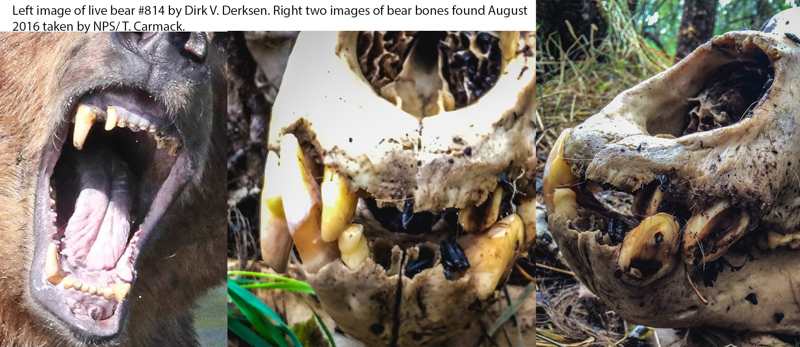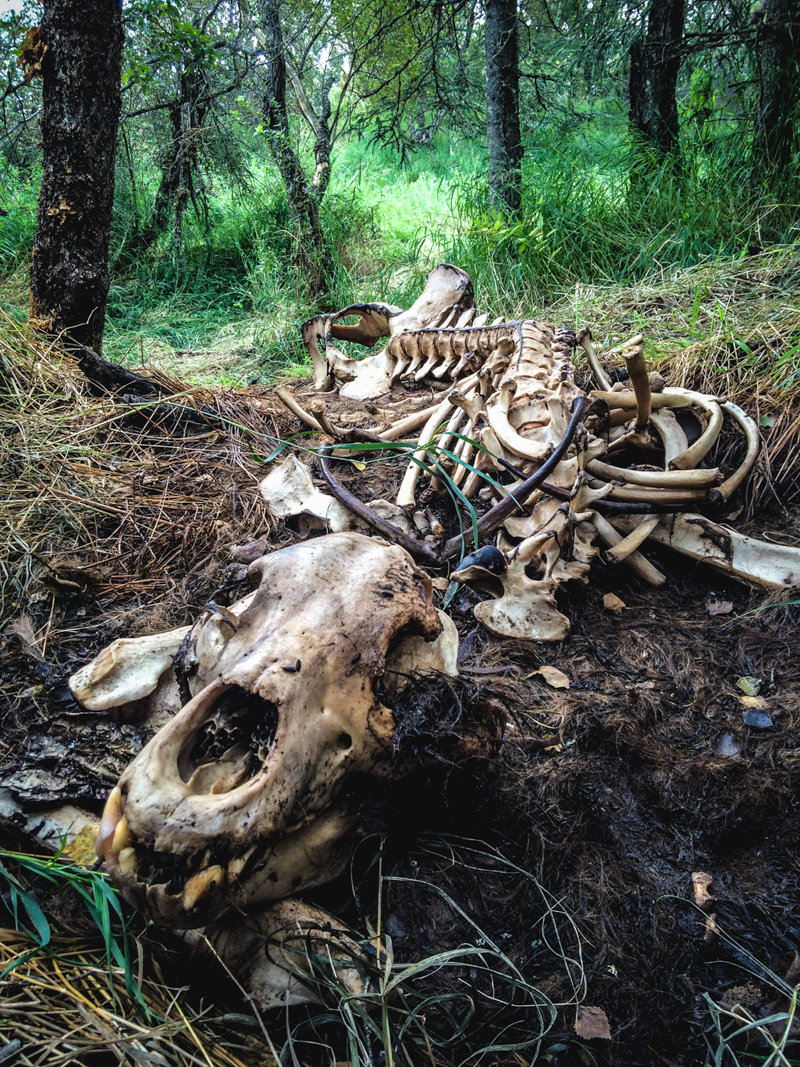A glint of white bone caught the eye of an archeologist ranger near the angler’s trail that leads from the falls platform to the upper half of the Brooks River last week. They stumbled across the remains of a large brown bear that they say wasn’t there when they first initiated their work in the area in June.
Photo comparisons of the bear’s teeth to images of bear #814’s teeth show similarities. Bear #814 hasn’t been seen on the river in recent weeks. Bear Techs are quick to say that teeth pictures are not enough to conclusively say what bear it is and that we will never know for sure. Examine the images for yourself and make up your own mind; is this bear #814?

The bones were found a matted down circle of dry grass with almost all meat and blood stripped away. Only a small amount of connective tissue remained. The back legs were missing from the area and the front legs were present but a small distance away.

NPS Photo/ T. Carmack
A tissue sample was collected for genetic analysis and future study but there was not nearly enough remaining to determine what killed it. Such a large and charismatic creature temps us to imagine this bear going out in an epic battle for dominance. But bears rarely fight to the death and there’s no evidence that this was a violent death. But it could have been.

NPS Photo/T. Carmack.
The bear could have died from disease, parasites, old age, or a thousand other things. Many bears are affected by canine adenovirus type one, canine distemper, canine parvo, infection, and encephalitis, not to mention all the parasites. They can also suffer from arthritis, cataracts, cavities, and numerous kinds of tumors. Parasites and diseases rarely kill bears but often weaken and make them more susceptible to death in other forms.

NPS Photo/ T. Carmack.
To some extent other bears probably ate this bear. Its back legs were completely removed from the area. It’s body also likely fed a myriad of other animals and insects. Death is part of the natural cycle of life in Katmai National Park.
Rangers collected the head and claws to be cleaned and used for education. I can already imagine passing around the claws to visitors and telling them how special this place is. In the coming years thousands of inquisitive eyes will gaze into this bear’s empty sockets and wonder how it lived.

